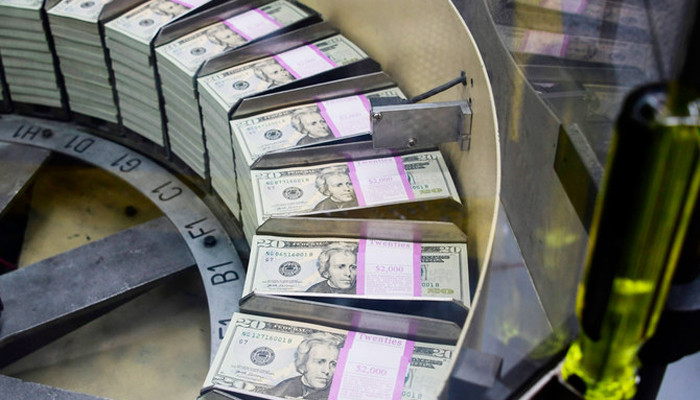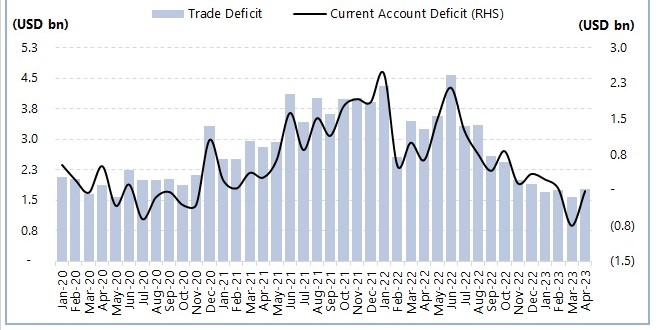As the government continues to restrict imports amid a liquidity crisis, the current account posted a surplus for the second consecutive month in April.
The country posted a surplus of $18 million this month compared to a current account deficit — the gap between a country’s expenditures and income — of $640 million last year, data released by the State Bank of Pakistan (SBP) showed Tuesday.
In March, the current account was in surplus for the first time since November 2020 and clocked in at $654 million — the highest since February 2015.
Arif Habib Limited Head of Research Tahir Abbas said April’s current account surplus was lower than expected because of the SBP’s clearance of an import backlog.
Overall, in the 10 months of the current fiscal year, the current account deficit came in at $3.25 billion, declining 76% compared to $13.65 billion during the same period last year.
According to the SBP data, the import of goods fell 38% year-on-year to $3.7 billion in April. On the other hand, exports also fell 33% to $2.11 billion.
Meanwhile, remittances also decreased 29% to $2.2 billion.
Former finance ministry advisor Dr Khaqan Najeeb said that the reduction in the current account deficit by curtailing imports, however, necessary was unsustainable.
“The current account has shown a surplus for two months, which has come on the back of containing imports through administrative measures. The curtailment of the imports has also resulted in large-scale manufacturing slowing down in the country and overall activity coming to much slower levels whether it’s the service sector or the trade sector,” he noted.
However, this way was unsustainable as the current account deficit would rise again once import curbs were lifted, Dr Najeeb said. Instead, the government should increase the productive capacity of the economy and build an export sector, he suggested.
“It’s not Pakistan’s imports at 22-25% of GDP that are the main issue, it’s the 10% export-to-GDP ratio. At the same time, maintaining remittances by ensuring an orderly movement of the rupee would also be helpful in meeting the country’s current account needs,” the former finance ministry advisor stated.
As the country’s foreign exchange reserves fell to critically low levels last year, the government decided to restrict imports to “essential items”. While some of the restrictions have since been eased, companies across all sectors have complained that banks are not opening letters of credit (LCs). Several manufacturers, especially in the automotive sector, have temporarily shut down plants citing inventory shortages.
Meanwhile, international institutions — the International Monetary Fund (IMF), World Bank and Asian Development Bank — have slashed Pakistan’s growth forecasts, projecting that the economy would grow between 0.4% to 0.6% this fiscal year.
The country’s foreign exchange reserves have declined to $4.38 billion as of May 5, which is not sufficient to cover even a month’s imports.
The country is scrambling to revive a crucial loan programme with the IMF, without which it risks default as its reserves deplete to a critical level.


